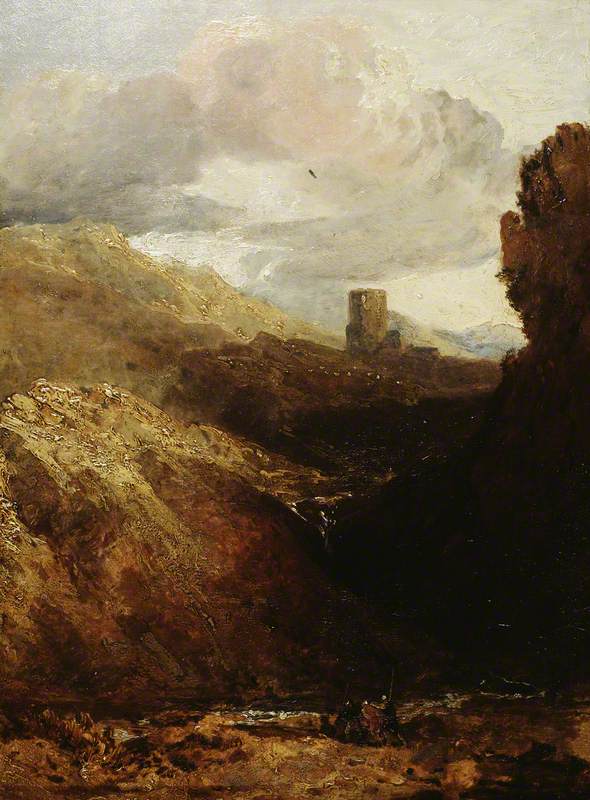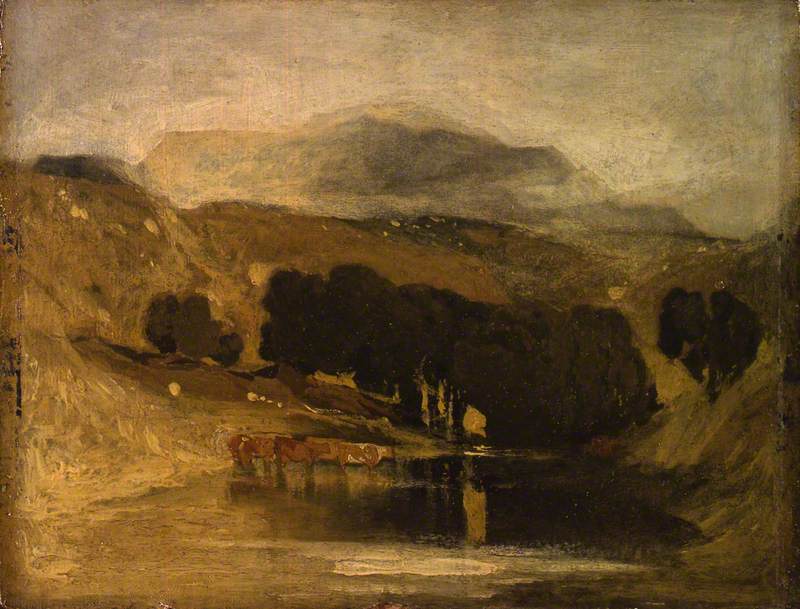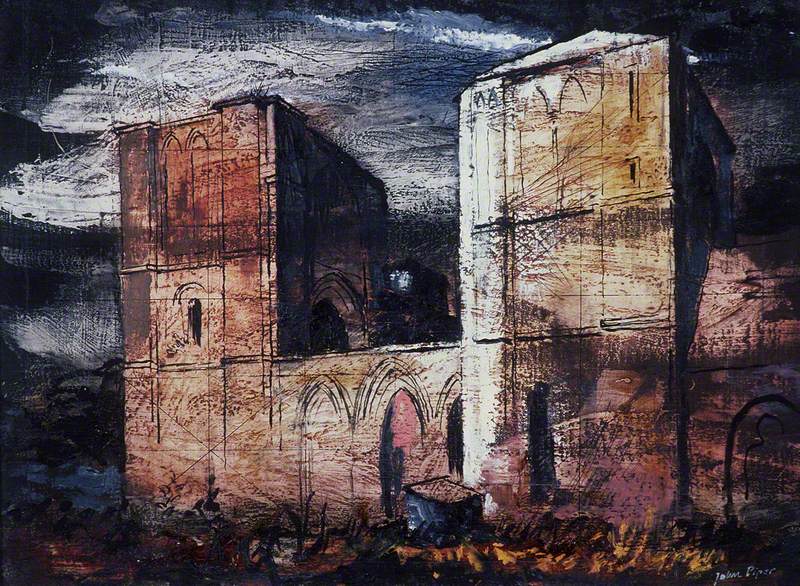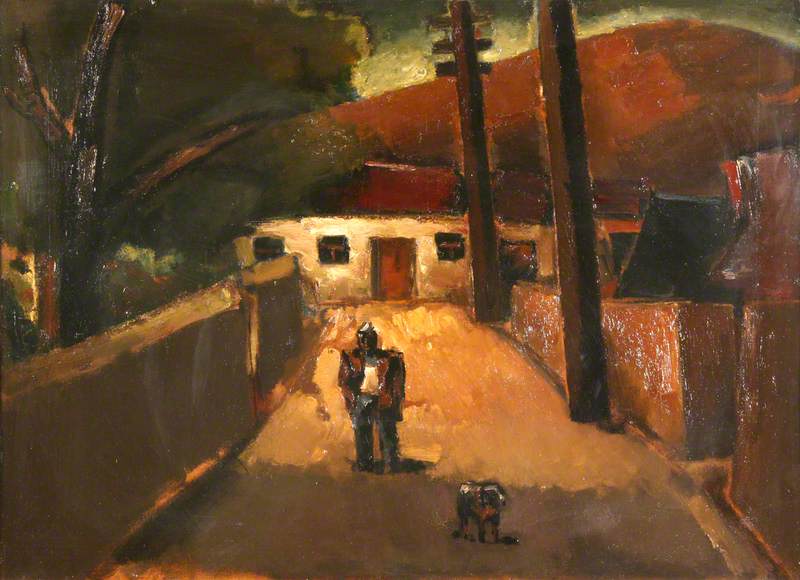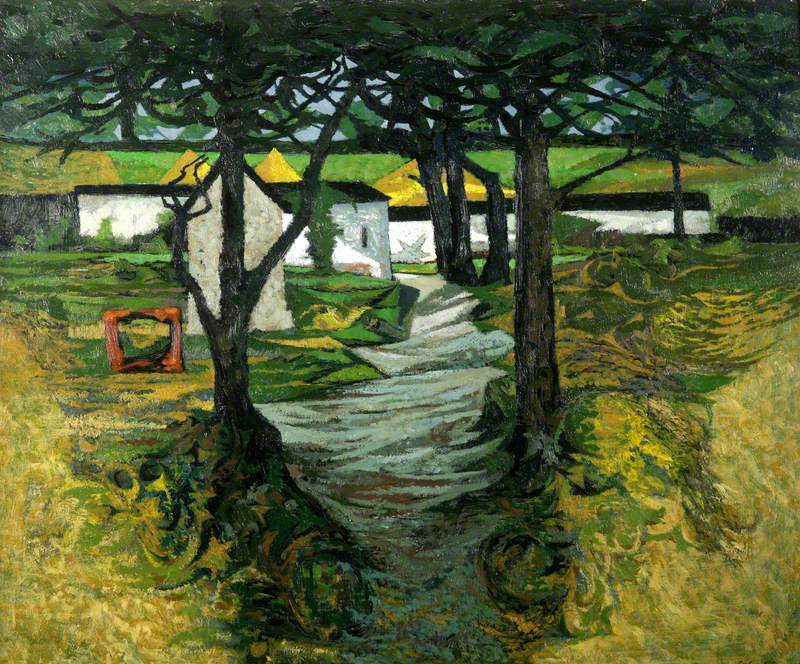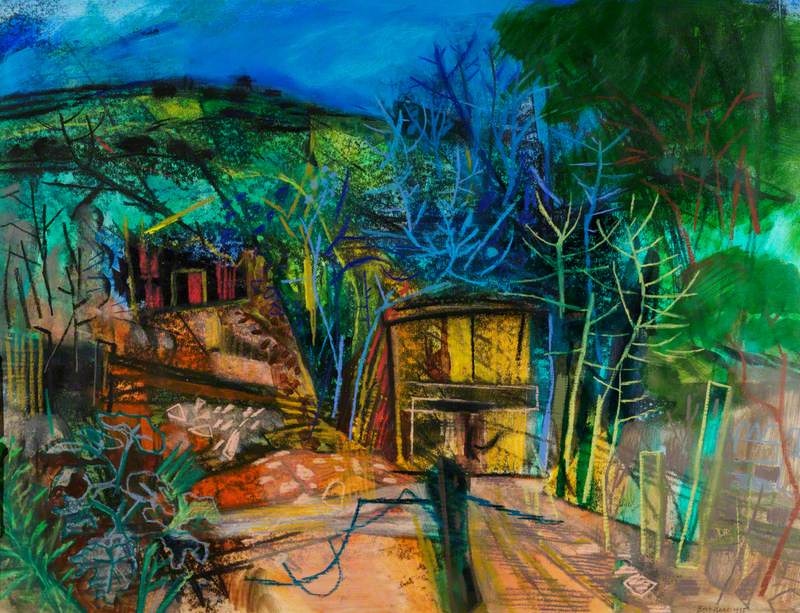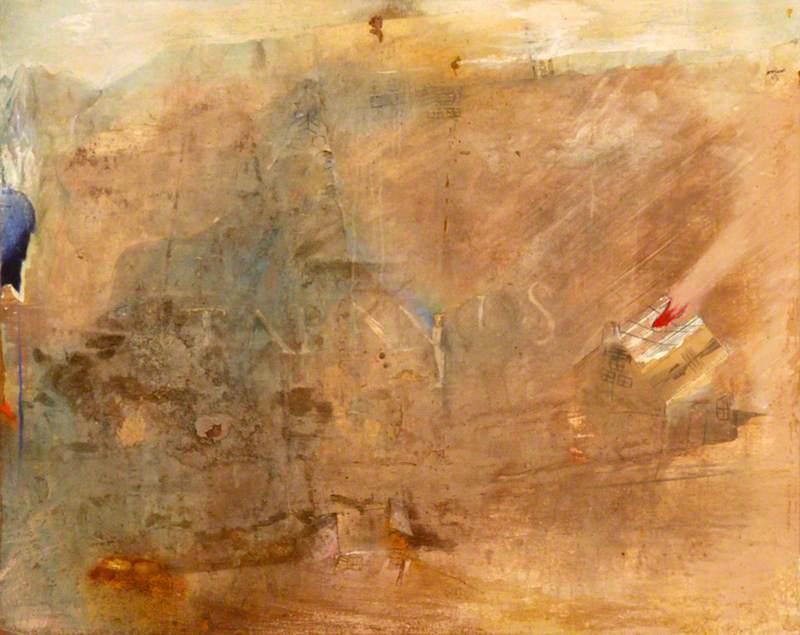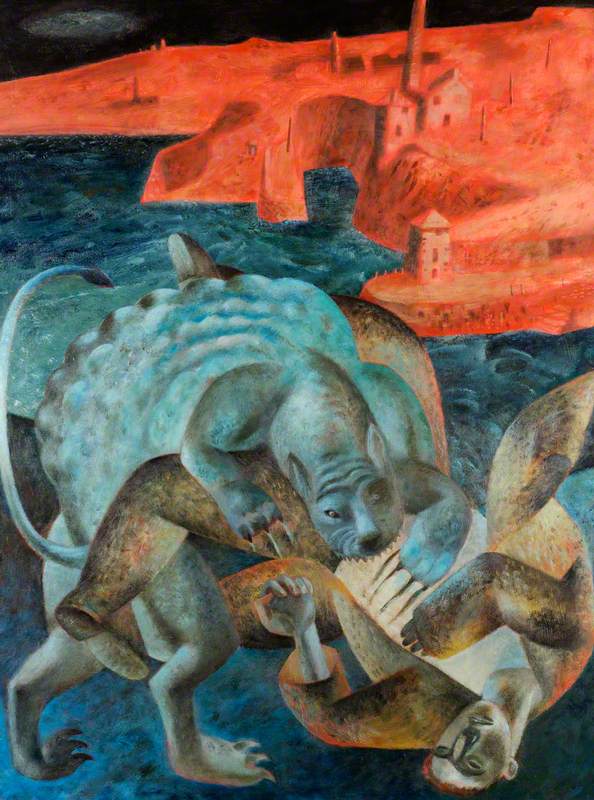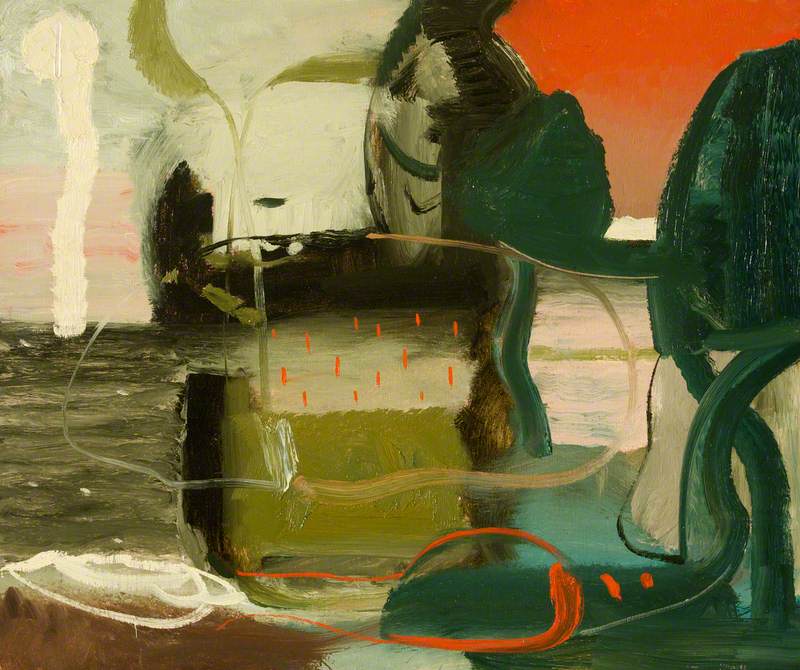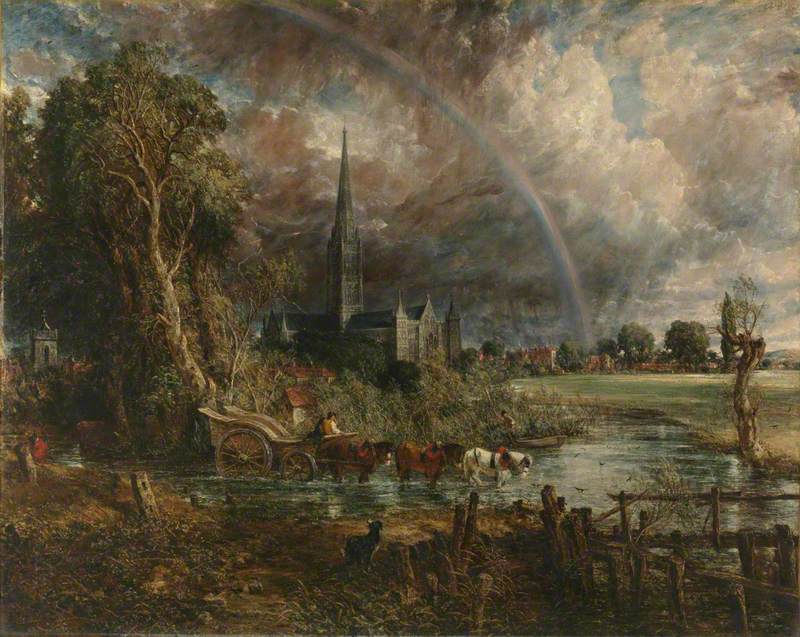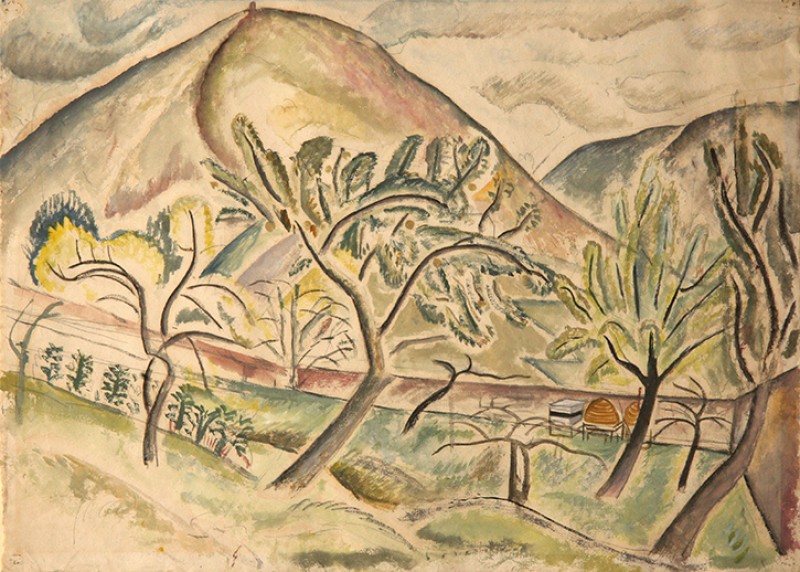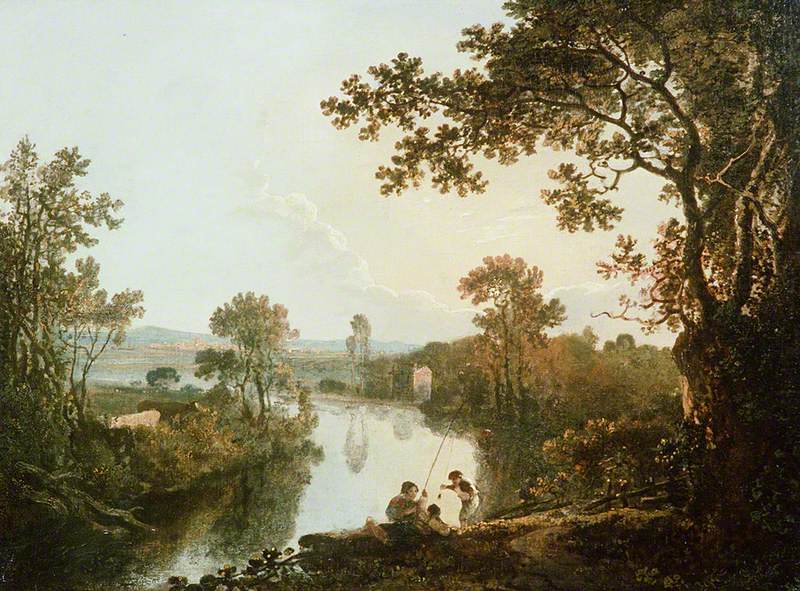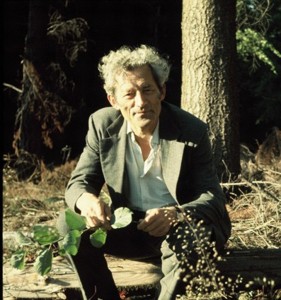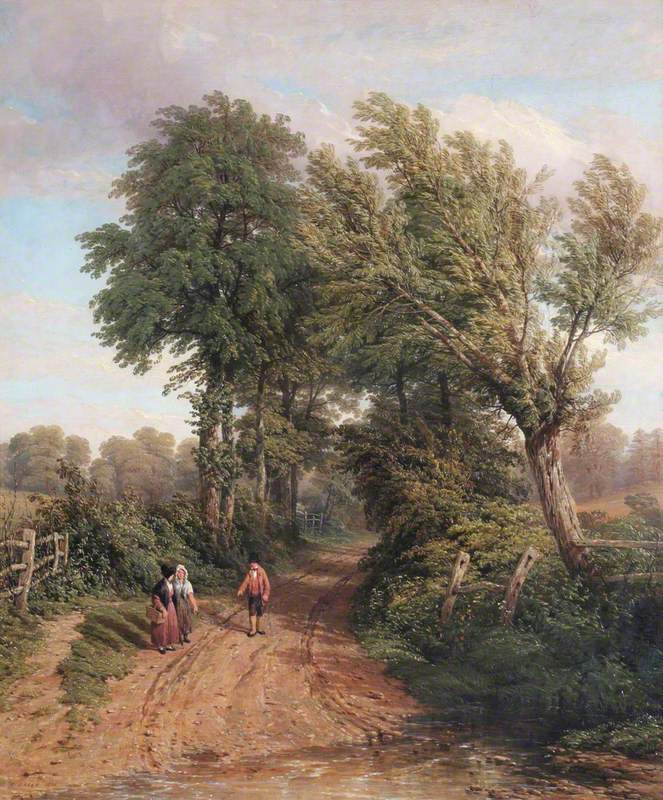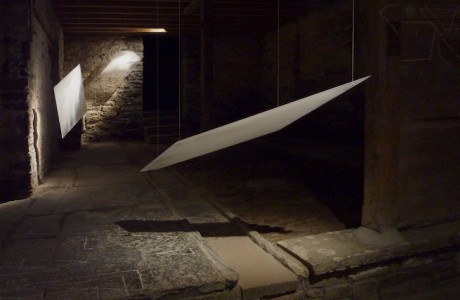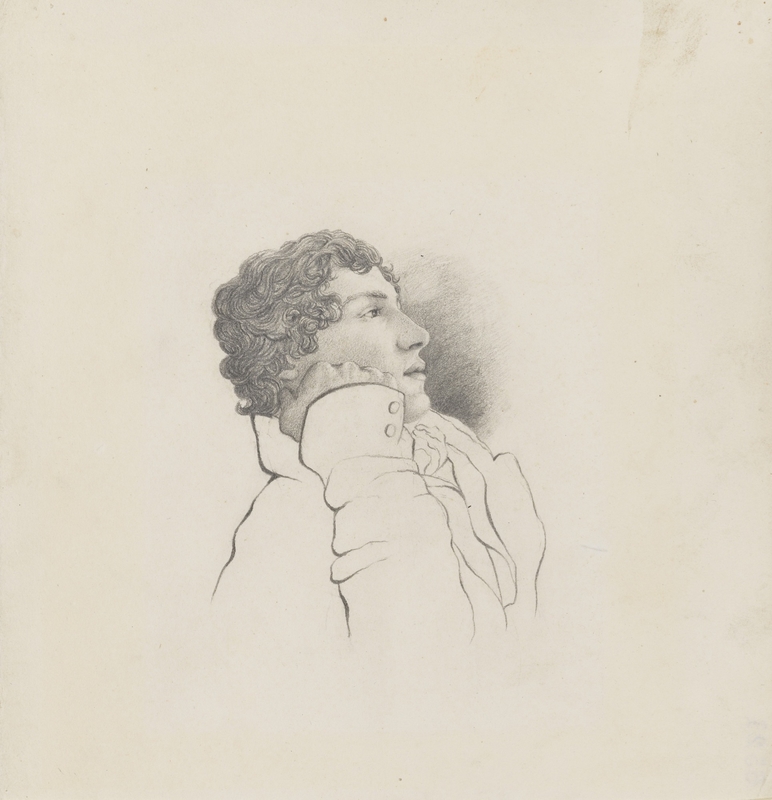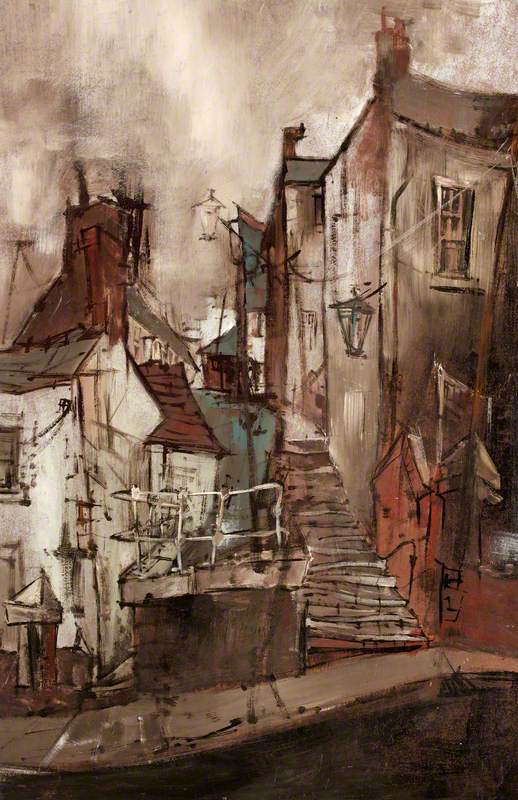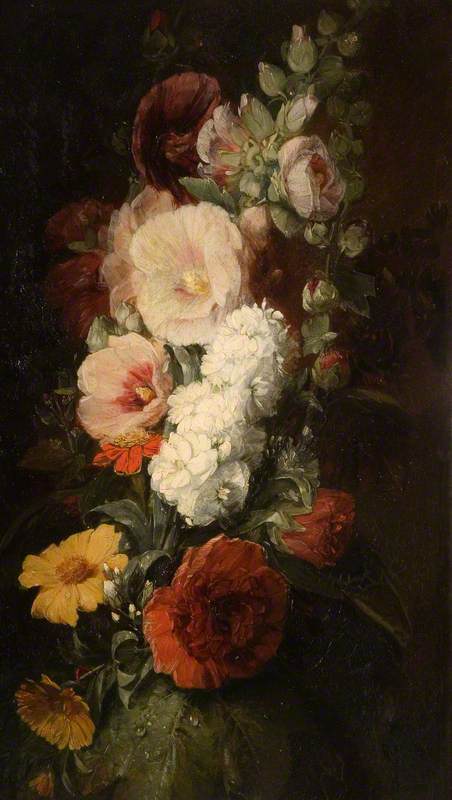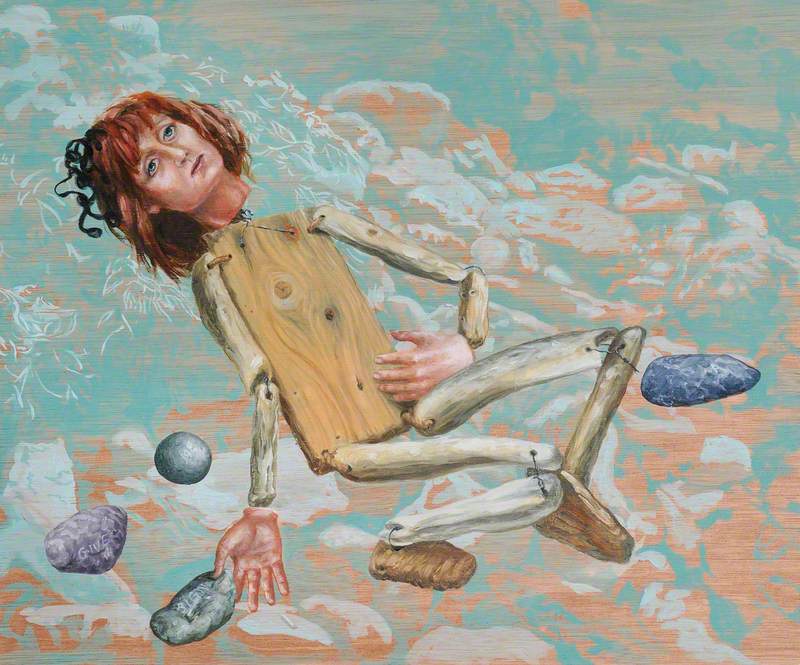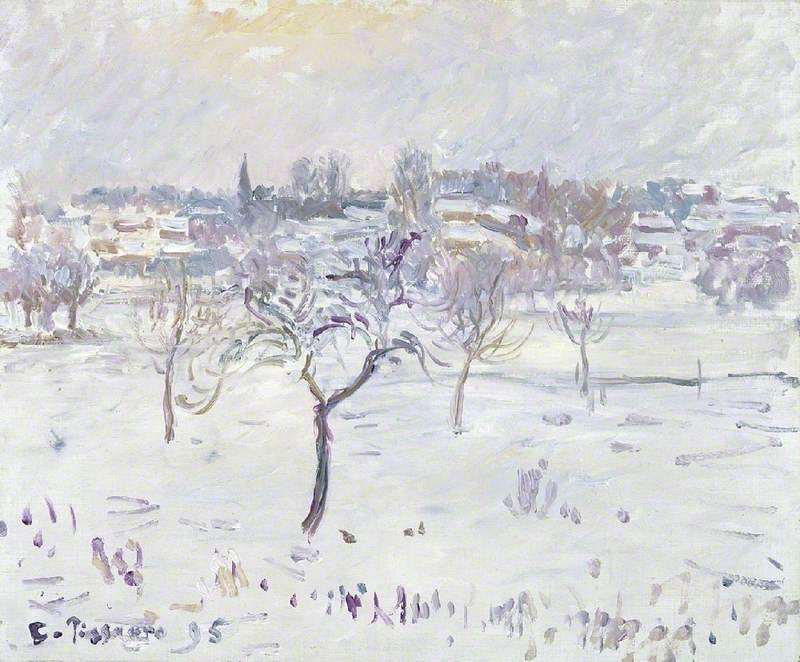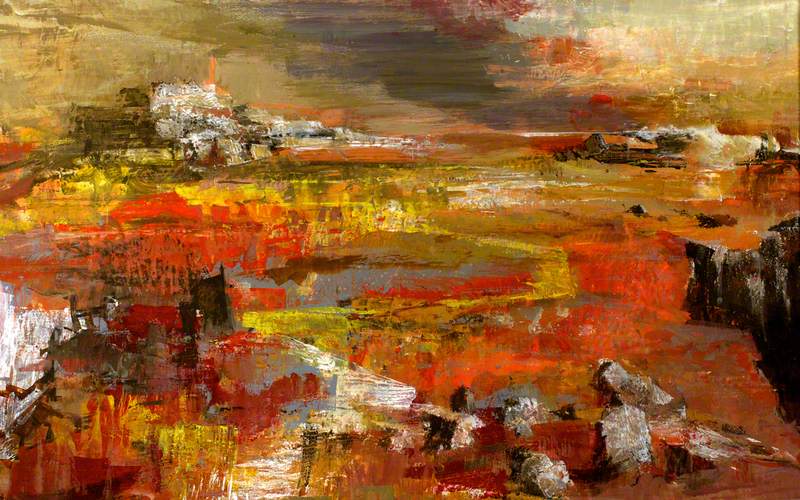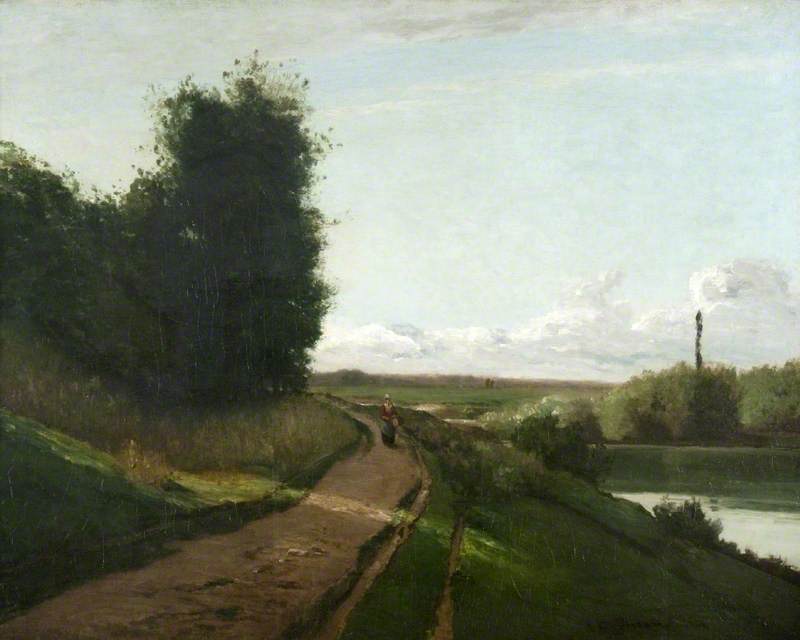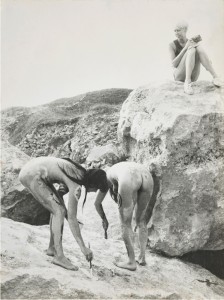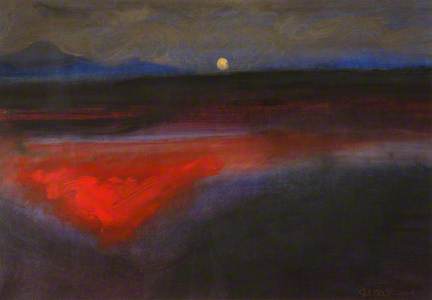In the last few months I’ve had the privilege of devising an exhibition as guest curator for the Museum of Modern Art Machynlleth (MOMA) on ‘Romanticism in the Welsh Landscape’. With over 60 works dating from the late eighteenth century to the present, it’s the most substantial exhibition MOMA has ever held, and it’s been bringing in record numbers of visitors. If you haven’t seen it, you have until 18th June 2016.
The exhibition puts the case that Wales has had a key role to play in romantic landscape art since the eighteenth century. This article highlights some favourite works in the exhibition that you can see on Art UK, but many have been loaned by private collections, or are seldom-seen works on paper, or are by artists whose work is not yet well represented in public institutions.
The Romantic Era
The earliest painters to treat landscape romantically and express their own responses to them were influenced by the Welsh-born artist Richard Wilson, who grew up just two miles from Machynlleth. According to John Ruskin, Wilson was the earliest painter of ‘sincere landscape art, founded on a meditative love of Nature’. In Italy Wilson had studied idealised classical landscape, but his most directly observed work back in Wales has a warmth and expressive depth very different to classical painting or topographical watercolour. The exhibition includes, from Manchester City Galleries, his view of the Mawddach valley, which takes as its real subject the massif of Cadair Idris, presented as an object of beauty and grandeur in its own right.
Valley of the Mawddach with Cader Idris Beyond
1770–1775
Richard Wilson (1713/1714–1782) 
From the end of the eighteenth century Wales became a magnet to visiting artists, mainly from lowland England, who came seeking wild nature and the country of the ancient British people. The sublime mountains, waterfalls, mines and ruined castles of Wales became subjects through which to consider themes such as the individualism of Britain, the power of nature, the immensity of Creation and the devastation wrought by time.
For many young artists, such Welsh landscapes were training grounds; places that drew out innovative, personal artistic visions. J. M. W. Turner first came to Wales aged 17 and returned year after year. He walked across the country with excursions to sketch castles, abbeys, waterfalls and cliffs, often covering 20 or 25 miles a day. His painting of Dolbadarn Castle from 1799–1800, loaned by the National Library of Wales, is small, but it holds its own: dark, mysterious and dramatic. It presents a historical narrative against a landscape of pathos – it is only barely possible to make out the bent figure of Owain Goch, the medieval prince dragged by soldiers to his imprisonment in Dolbadarn. The height and distance of the castle is exaggerated to suggest brutal isolation. A larger version of this painting was the one Turner chose to represent him in the collection of the Royal Academy.
Having grown up in Norfolk, John Sell Cotman was 18 when he first experienced mountainous landscapes on a painting tour of Wales. He was stirred by the wild weather and rugged terrain and came back two years later. For the rest of his life he revisited in his imagination, making paintings like the one brought from Norwich City Art Gallery for the exhibition, of Cadair Idris some 30 years on. Although Cotman became a hero to Modernists who – long after his death – recognised abstract values in his simplified planes of colour, a romantic mind can be seen in his dramatic cloud-shadows and mesmerising reflections.
Wales and neo-romanticism
From the 1920s onwards, some innovative artists began to cross-fertilise the passions of the Romantic era with modernist ideas from cubism, surrealism, expressionism and abstraction. This burst of what became known as ‘neo-romanticism’ is often seen as an English phenomenon, but Welsh artists and the Welsh landscape were decisive.
The two most influential British artists of neo-romanticism, Graham Sutherland and John Piper, spent formative periods in Wales from the 1930s. Sutherland’s painting was transformed after he experienced the ‘exultant strangeness’ of Pembrokeshire’s rocky skylines and hidden valleys and he responded in a newly free and expressive style. For Piper, Wales was a place of discovery as he left behind abstract art and found new ways to convey the emotional power of mountains and monuments. He painted a series of images of Llanthony Abbey in 1941. The abbey and its setting fast in the Black Mountains had fascinated artists of the Romantic era. Piper’s view was of the abbey itself, with textured surfaces and scintillating colours that lent the massive towers a powerful presence under the lowering sky.
Other visitors who responded to the Welsh landscape included Ivon Hitchens and the refugee Expressionist Josef Herman, who was so captivated by the ‘sadness and grandeur’ of the Swansea valley that he made his home there for 11 years. One of his great, glowing paintings of the mining village where he lived, painted in retrospect in 1968, has been loaned by Brecknock Museum & Art Gallery.
Welsh artists Ceri Richards and David Jones can also be seen as crucial contributors to neo-romanticism, and a further generation of Welsh-born painters also absorbed neo-romantic approaches to landscape. John Elwyn is represented in the exhibition by three works, one of which is a landscape of farm buildings and a path through trees from Swansea’s Glynn Vivian Art Gallery. Throughout his life he painted recollections of the farms and lanes where he grew up in the Teifi valley. Many of his paintings expressed his hiraeth, his longing for the landscape of home, and they invited the viewer in, up paths to whitewashed barns and golden hayricks.
Bert Isaac, was fascinated all his life by the return of nature to abandoned places, especially the derelict mining landscapes of the Clydach Gorge near his home in Abergavenny and Dorothea slate quarry near Caernarfon: places where vibrant industry had faded to leave behind rusting metal, waste tips, weeds and saplings. In his paintings he responded to the visual landscape but also, through abstract mark-making, to its sounds, movements and energies. He returned over and over again in his imagination to these same places, absorbed by nature’s ‘green fuse’ and its powers to redeem decay.
Romanticism now
In the last 30 years, artists have explored new ways to engage with the Welsh landscape and explore emotions and associations, often with deep knowledge of the artists of the past. Approaches are more diverse than ever and the toolkits have expanded from traditional watercolour and oil to found materials, installation, text and digital video. Romanticism is living and evolving.
In Taranis (Thundergod) the politically committed artist Ivor Davies searches for meaning in the loss of farms and Welsh-speaking communities on Mynydd Epynt to make way for a military firing range. Nothing is clear in his Epynt any longer; all is confusion and obliteration above which only a dream horizon hovers. The artist literally made the painting from the landscape by mixing the red earth of the mountain into the surface. One farmhouse is aflame and others are mere ghosts; a manifestation of the Celtic god of thunder conjures gunfire and his name, Taranis, appears across the composition like graffiti.
Romantic landscape is part of a narrative in the work of Clive Hicks-Jenkins from his series ‘The Temptations of Solitude’. This drew on stories from the lives of the Desert Fathers from a fifteenth-century Tuscan altarpiece, placing them among unlikely Welsh streets, slag heaps or vegetable plots. The stories are of spiritual horrors or dilemmas, which Hicks-Jenkins amplifies through his use of place. He has located his nightmarish painting of a man attacked by a lioness on a cliff above the port of Amlwch. The quay and lighthouse, sail loft and chimneys are all there but he has made his beast more sea-creature than lioness and, as Sutherland or Piper might have done, has cast Amlwch a sublime blood red.
The late Maurice Cockrill moved through several stylistic phases, but he returned repeatedly to a studio near Conwy and his memories of growing up in the North Wales coalfield. His fluid, semi-abstract paintings evoked nature, the elements, the progress of the Conwy river to maturity and the scars that humans cut into the land. The frozen drama of his painting Small Enclosure from Newport Museum & Art Gallery recalls the neo-romantic art of the 1930s and 1940s, for example the aerial battle paintings of Paul Nash or Sutherland’s apocalyptic Pembrokeshire landscapes.
Glenys Cour expresses with extraordinary sensitivity the qualities of Gower, where she lives and still paints aged 92. She finds compelling drama in skies, sea and landscapes. Cycles and seasons are always present in her meditations. Many evoke dusk or dawn, when Gower’s mysteries are deepened by shadows or veils of mist.
There might be many reasons for Wales’ power of place. Its landscapes are intricate and diverse. Rugged mountains readily convey colossal energy in nature. Wales relishes poetic culture and a legacy of myths in which, like so much that is romantic, everything has more than one meaning and nothing is quite what it seems. But above all, there is the knowledge of a powerful tradition of romantic landscape that has continued for some 250 years.
Dr Peter Wakelin, Guest Curator
'Romanticism in the Welsh Landscape' was at MOMA Machynlleth from 19th March to 18th June 2016
